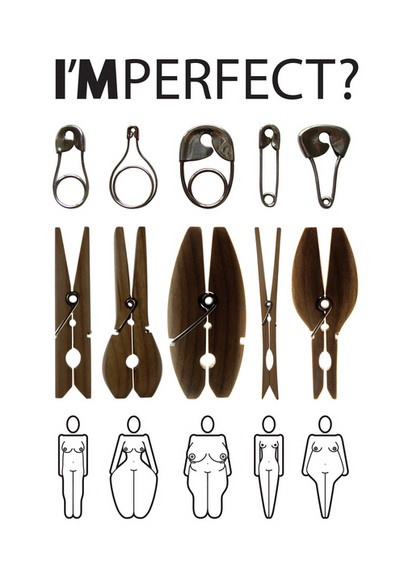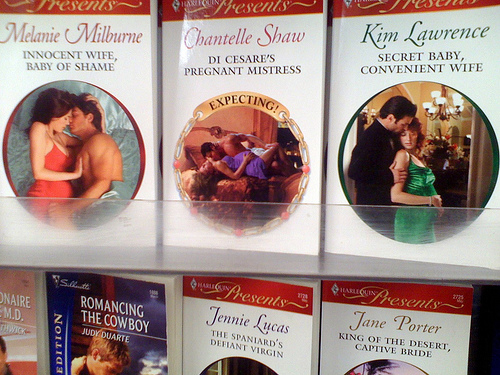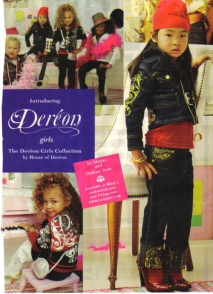By Leonie Martine Janssen (from Miguel via Inspire Me, Now!):
Archive: 2008
Disclosure: My dissertation, called “Female Genital Mutilation” in the American Imagination, is about how different U.S. constituencies (mainly doctors, activists, journalists, and academics) have framed female genital cutting over the past 30 years. I offer this context for the images below (submitted by Craig C. and Breck and found via boingboing and adsoftheworld):
There is great conflict among feminist activists over how to go about decreasing the prevalence of “female genital cutting,” better known to most as “female genital mutilation.” One of the reasons for this conflict is the tendency of “Western” feminists to impose their own worldview onto communities where we find cutting (mostly among some ethnic groups in Africa, but also found in the Middle East and Asia). For example, the importance of sexual pleasure derived from the clitoris, and the relationship between orgasm and women’s liberation, is a central tenent of post-second wave feminism in the West. From this perspective, reduction of the external clitoris (clitorectomy) appears particularly horrendous and an obvious sign of women’s oppression. However, many women who are part of communities where cutting occurs find this logic to be irrelevant to their lives. Sexual pleasure takes a backseat to the benefits that come with cutting for the women themselves (group membership, attainment of adult female status, marriageability, becoming fully feminine — it varies tremendously, but be sure that the practices are important and meaningful in their own contexts). In any case, if “Western” feminists are going to try to “help” women in other parts of the world, many women say they’d much rather have clean drinking water and freedom from penalizing economic policies imposed by the U.S., than sexual pleasure. (I should point out, by the way, that whether and which and how much genital cutting practices actually do eliminate sexual pleasure and orgasm is hotly debated.)
These images are part of a campaign to raise awareness about and opposition to female genital cutting in Spain (I editorialize below):
I try not to get too emotional on this blog, but this hits me right where it hurts, and I find these images utterly appalling. The idea, of course, is that when women’s sexual pleasure has been excised (and remember, this is a controversial assumption) they feel nothing, but the implication is that they ARE nothing. These ads suggest that women who have experienced genital cutting are equivalent to fuck toys. Everything else about them disappears in these ads. They are completely defined by the status of their genitals, and the status of their genitals is the status of their souls. Even if it is true that these women no longer experience clitoral orgasm, or even experience pain during intercourse, they are still multidimensional human beings who love others and are loved by those around them for their uniqueness and individuality… yes, even the men they sleep with.
What a horribly offensive ad campaign. The fact that it is likely made for people in Spain and may never be seen by women who are genitally cut makes it no less offensive. Instead, it is an excellent example of the kind of ethnocentric, arrogant transnational activism that makes people in the West look like total assholes.
I should clarify: I am making these observations as a sociologist, not as an activist. I do have opinions about various sorts of male and female genital cuttings, but that’s not my point here. My point is not whether or not FGCs are oppressive to women or whether individuals in the West should be involved in eradication efforts. My point is to interrogate how we go about expressing opposition and intervention. There are many ways in which to go about this. As you can tell, I do not particularly like this one.
UPDATE: Racialicious made my day when they asked to repost this post on their own blog. It is well worth taking a look at how different the comments are here versus there and thinking about what that means.
Emily sent us this classic Goodyear tire ad. The ad starts out talking about mileage and showing men, but then moves to a segment where a woman is driving and there’s scary music and we’re to presume that she’s maybe being chased or is in danger–and you want to be sure your wife has good tires so she can get away.
NEW! This ad for the VW Bug also plays on the idea that women are terrible drivers:
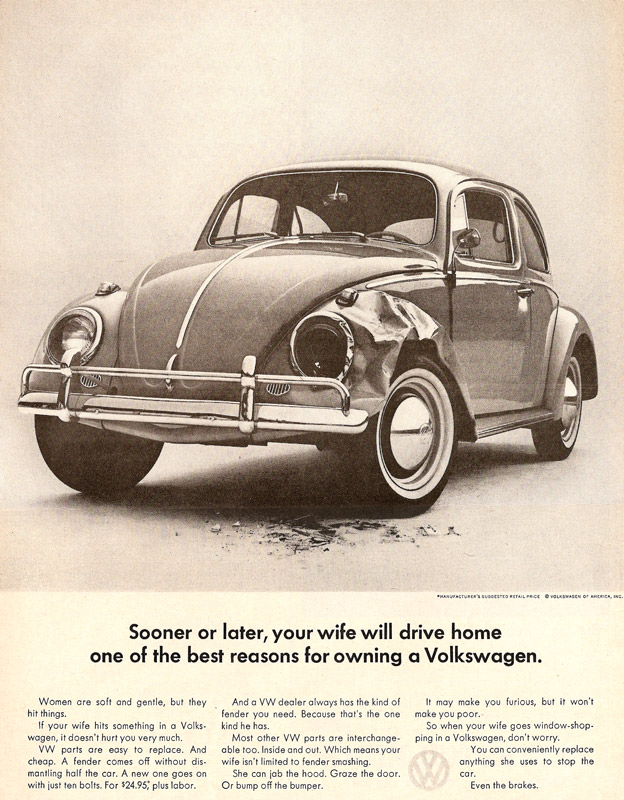
Text:
Women are soft and gentle, but they hit things.
If your wife hits something in a Volkswagen, it doesn’t hurt you very much.
…
She can jab the hood. Graze the door. Or bump off the bumper.
It may make you furious, but it won’t make you poor.
So when your wife goes window-shopping in a Volkswagen, don’t worry.
You can conveniently replace anything she uses to stop the car.
Even the brakes.
Larry brought my attention to Save the Ta-Tas, a breast-cancer awareness company. I can’t quite decide what to make of them–the website says a “portion of gross sales” is contributed to fighting breast cancer, but not how big of a portion. So presumably you are fighting breast cancer by paying $24.95 for t-shirts like this one:
I assume it’s a for-profit company. And the t-shirts are kind of funny, and they’re bringing attention to a worthy cause. And yet it’s another example of consumption as activism (see here, here, and here; there are other examples if you search under the “activism” tag). I mean, you could just donate $25 straight to a breast cancer awareness organization and know all $25 went there, as opposed to knowing some unspecified “portion” of it did. I guess if you’re going to buy a t-shirt anyway, you might as well buy one that will provide some money to an organization you care about, but if your interest is in actually funding breast cancer research, there seem to be more efficient ways to go about it.
On the other hand, I am fascinated by this product:
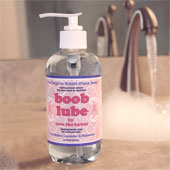
Despite what your dirty little mind might be thinking, the website informed me that Boob Lube is to be used for breast self-exams. Why you would need lube for that, I cannot say.
Thanks, Larry!
NEW: 73man pointed out the Irish Women’s Health Care “Two Tits and a Vote” campaign to get people to demand that politicians help provide more access to breast cancer screening. Here’s a photo from the campaign:
Note that the Mona Lisa stamp in the background has huge boobs.

This campaign is unlike the first one because it’s not attached to a corporation, as far as I can tell. But it seems like there would be a way to bring attention to this issue without using the body of a model-thin women with big boobs.
Then again, I guess maybe those are the type of boobs politicians would be most worried about being damaged.
Thanks, 73man!
A humorous look at how yogurt is marketed to the generic category, “woman.” Quite funny! (From Current TV via Jezebel.)
[youtube]https://www.youtube.com/watch?v=Sf_roIC9Pso[/youtube]
NEW: Here’s an actual yogurt ad that makes it clear that a) yogurt is for women and b) yogurt somehow makes women feel more like “themselves.” Thanks, 73man!
Lisa Wade, PhD is an Associate Professor at Tulane University. She is the author of American Hookup, a book about college sexual culture; a textbook about gender; and a forthcoming introductory text: Terrible Magnificent Sociology. You can follow her on Twitter and Instagram.
Miguel pointed us to this now defunct TV series, Stripperella.

According to Wikipedia:
Stripperella was a short-lived adult-oriented American animated television series created by Stan Lee. The main character, voiced by and based on Pamela Anderson, is a stripper named Erotica Jones who is also the superheroine/secret agent Stripperella. It is rated TV-MA in the United States.
Enjoy her many stripper-related tricks in this youtube homage:
[youtube]https://www.youtube.com/watch?v=16ZlNq65S4I[/youtube]
Thanks Miguel!
Lisa Wade, PhD is an Associate Professor at Tulane University. She is the author of American Hookup, a book about college sexual culture; a textbook about gender; and a forthcoming introductory text: Terrible Magnificent Sociology. You can follow her on Twitter and Instagram.
Were you aware there is a sub-genre of romance novels focusing specifically on pregnant women? I wasn’t.
I like the titles–Innocent Wife, Baby of Shame…so scandalous! Here’s a link to the image.
I am not, at this very moment, entirely certain of how you could use these in a sociology course–I guess in a discussion of how we think of pregnant women’s bodies (are they beautiful or not?), how we feel about pregnant women have sex or of men being attracted to pregnant women who aren’t their wives (I bet a good number of people would find it kind of creepy), or whether we still think there is such a thing as a “baby of shame.” It’s interesting that the women are pregnant but still very skinny everywhere but in their “baby bump,” as the tabloids call it these days. This might be a starting point for a discussion of changing ideas of pregnancy–that the amount of weight you’re “supposed” to gain has decreased, that pregnant women ideally say thin everywhere else, and that they’re supposed to lose the weight immediately. Or you could contrast pregnancy with just being “fat”–can you imagine a similar sub-genre of romance novels with large, non-pregnant (or even pregnant) women?
Whether or not they’re useful, I know that they’re funny. Secret Baby, Convenient Wife? Awesome!
Thanks to Jason for sending it along!
This is an ad (found here) for House of Dereon’s collection for girls. House of Dereon is the fashion label created by Beyonce Knowles and her mother.
The girl standing on the right is wearing high heels which seem to actually be her size. They are not, thankfully, for sale on the website. This might be interesting to add to a discussion of the adultification of girls or the Miley Cyrus scandal.
Thanks to Elizabeth for pointing this one out!
Disclosure: My dissertation, called “Female Genital Mutilation” in the American Imagination, is about how different U.S. constituencies (mainly doctors, activists, journalists, and academics) have framed female genital cutting over the past 30 years. I offer this context for the images below (submitted by Craig C. and Breck and found via boingboing and adsoftheworld):
There is great conflict among feminist activists over how to go about decreasing the prevalence of “female genital cutting,” better known to most as “female genital mutilation.” One of the reasons for this conflict is the tendency of “Western” feminists to impose their own worldview onto communities where we find cutting (mostly among some ethnic groups in Africa, but also found in the Middle East and Asia). For example, the importance of sexual pleasure derived from the clitoris, and the relationship between orgasm and women’s liberation, is a central tenent of post-second wave feminism in the West. From this perspective, reduction of the external clitoris (clitorectomy) appears particularly horrendous and an obvious sign of women’s oppression. However, many women who are part of communities where cutting occurs find this logic to be irrelevant to their lives. Sexual pleasure takes a backseat to the benefits that come with cutting for the women themselves (group membership, attainment of adult female status, marriageability, becoming fully feminine — it varies tremendously, but be sure that the practices are important and meaningful in their own contexts). In any case, if “Western” feminists are going to try to “help” women in other parts of the world, many women say they’d much rather have clean drinking water and freedom from penalizing economic policies imposed by the U.S., than sexual pleasure. (I should point out, by the way, that whether and which and how much genital cutting practices actually do eliminate sexual pleasure and orgasm is hotly debated.)
These images are part of a campaign to raise awareness about and opposition to female genital cutting in Spain (I editorialize below):
I try not to get too emotional on this blog, but this hits me right where it hurts, and I find these images utterly appalling. The idea, of course, is that when women’s sexual pleasure has been excised (and remember, this is a controversial assumption) they feel nothing, but the implication is that they ARE nothing. These ads suggest that women who have experienced genital cutting are equivalent to fuck toys. Everything else about them disappears in these ads. They are completely defined by the status of their genitals, and the status of their genitals is the status of their souls. Even if it is true that these women no longer experience clitoral orgasm, or even experience pain during intercourse, they are still multidimensional human beings who love others and are loved by those around them for their uniqueness and individuality… yes, even the men they sleep with.
What a horribly offensive ad campaign. The fact that it is likely made for people in Spain and may never be seen by women who are genitally cut makes it no less offensive. Instead, it is an excellent example of the kind of ethnocentric, arrogant transnational activism that makes people in the West look like total assholes.
I should clarify: I am making these observations as a sociologist, not as an activist. I do have opinions about various sorts of male and female genital cuttings, but that’s not my point here. My point is not whether or not FGCs are oppressive to women or whether individuals in the West should be involved in eradication efforts. My point is to interrogate how we go about expressing opposition and intervention. There are many ways in which to go about this. As you can tell, I do not particularly like this one.
UPDATE: Racialicious made my day when they asked to repost this post on their own blog. It is well worth taking a look at how different the comments are here versus there and thinking about what that means.
Emily sent us this classic Goodyear tire ad. The ad starts out talking about mileage and showing men, but then moves to a segment where a woman is driving and there’s scary music and we’re to presume that she’s maybe being chased or is in danger–and you want to be sure your wife has good tires so she can get away.
NEW! This ad for the VW Bug also plays on the idea that women are terrible drivers:

Text:
Women are soft and gentle, but they hit things.
If your wife hits something in a Volkswagen, it doesn’t hurt you very much.
…
She can jab the hood. Graze the door. Or bump off the bumper.
It may make you furious, but it won’t make you poor.
So when your wife goes window-shopping in a Volkswagen, don’t worry.
You can conveniently replace anything she uses to stop the car.
Even the brakes.
Larry brought my attention to Save the Ta-Tas, a breast-cancer awareness company. I can’t quite decide what to make of them–the website says a “portion of gross sales” is contributed to fighting breast cancer, but not how big of a portion. So presumably you are fighting breast cancer by paying $24.95 for t-shirts like this one:
I assume it’s a for-profit company. And the t-shirts are kind of funny, and they’re bringing attention to a worthy cause. And yet it’s another example of consumption as activism (see here, here, and here; there are other examples if you search under the “activism” tag). I mean, you could just donate $25 straight to a breast cancer awareness organization and know all $25 went there, as opposed to knowing some unspecified “portion” of it did. I guess if you’re going to buy a t-shirt anyway, you might as well buy one that will provide some money to an organization you care about, but if your interest is in actually funding breast cancer research, there seem to be more efficient ways to go about it.
On the other hand, I am fascinated by this product:

Despite what your dirty little mind might be thinking, the website informed me that Boob Lube is to be used for breast self-exams. Why you would need lube for that, I cannot say.
Thanks, Larry!
NEW: 73man pointed out the Irish Women’s Health Care “Two Tits and a Vote” campaign to get people to demand that politicians help provide more access to breast cancer screening. Here’s a photo from the campaign:
Note that the Mona Lisa stamp in the background has huge boobs.

This campaign is unlike the first one because it’s not attached to a corporation, as far as I can tell. But it seems like there would be a way to bring attention to this issue without using the body of a model-thin women with big boobs.
Then again, I guess maybe those are the type of boobs politicians would be most worried about being damaged.
Thanks, 73man!
A humorous look at how yogurt is marketed to the generic category, “woman.” Quite funny! (From Current TV via Jezebel.)
[youtube]https://www.youtube.com/watch?v=Sf_roIC9Pso[/youtube]
NEW: Here’s an actual yogurt ad that makes it clear that a) yogurt is for women and b) yogurt somehow makes women feel more like “themselves.” Thanks, 73man!
Lisa Wade, PhD is an Associate Professor at Tulane University. She is the author of American Hookup, a book about college sexual culture; a textbook about gender; and a forthcoming introductory text: Terrible Magnificent Sociology. You can follow her on Twitter and Instagram.
Miguel pointed us to this now defunct TV series, Stripperella.

According to Wikipedia:
Stripperella was a short-lived adult-oriented American animated television series created by Stan Lee. The main character, voiced by and based on Pamela Anderson, is a stripper named Erotica Jones who is also the superheroine/secret agent Stripperella. It is rated TV-MA in the United States.
Enjoy her many stripper-related tricks in this youtube homage:
[youtube]https://www.youtube.com/watch?v=16ZlNq65S4I[/youtube]
Thanks Miguel!
Lisa Wade, PhD is an Associate Professor at Tulane University. She is the author of American Hookup, a book about college sexual culture; a textbook about gender; and a forthcoming introductory text: Terrible Magnificent Sociology. You can follow her on Twitter and Instagram.
Were you aware there is a sub-genre of romance novels focusing specifically on pregnant women? I wasn’t.
I like the titles–Innocent Wife, Baby of Shame…so scandalous! Here’s a link to the image.
I am not, at this very moment, entirely certain of how you could use these in a sociology course–I guess in a discussion of how we think of pregnant women’s bodies (are they beautiful or not?), how we feel about pregnant women have sex or of men being attracted to pregnant women who aren’t their wives (I bet a good number of people would find it kind of creepy), or whether we still think there is such a thing as a “baby of shame.” It’s interesting that the women are pregnant but still very skinny everywhere but in their “baby bump,” as the tabloids call it these days. This might be a starting point for a discussion of changing ideas of pregnancy–that the amount of weight you’re “supposed” to gain has decreased, that pregnant women ideally say thin everywhere else, and that they’re supposed to lose the weight immediately. Or you could contrast pregnancy with just being “fat”–can you imagine a similar sub-genre of romance novels with large, non-pregnant (or even pregnant) women?
Whether or not they’re useful, I know that they’re funny. Secret Baby, Convenient Wife? Awesome!
Thanks to Jason for sending it along!
This is an ad (found here) for House of Dereon’s collection for girls. House of Dereon is the fashion label created by Beyonce Knowles and her mother.
The girl standing on the right is wearing high heels which seem to actually be her size. They are not, thankfully, for sale on the website. This might be interesting to add to a discussion of the adultification of girls or the Miley Cyrus scandal.
Thanks to Elizabeth for pointing this one out!

